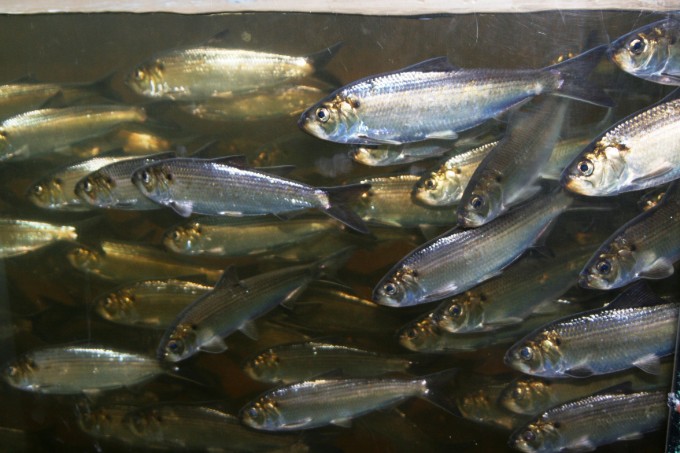Displaying items by tag: colorado river water restriction
The Revelator: 10 ways targeted dam removals can help solve the climate change dilemma
 Alewives returned by the millions after the Edwards and Ft. Halifax dams were removed in Maine. John Burrows/ASF via The Revelator
Alewives returned by the millions after the Edwards and Ft. Halifax dams were removed in Maine. John Burrows/ASF via The Revelator
By providing both mitigation and adaption, dam removal can lower greenhouse gas emissions and restore carbon sinks.
This article was originally published in The Revelator. Gary Wockner
As the climate crisis escalates, a huge amount of attention and money is being focused on climate solutions.
These can be divided into two categories: solutions that pursue “mitigation,” which lowers greenhouse gas emissions, and those that pursue methods to adapt to climate impacts to increase human and ecological resiliency.
Dams, of course, create enormous environmental harms, many of which have already been described in scientific literature. Equally well documented is the fact that removing dams can restore seriously damaged ecosystems. But missing from almost every climate-solution story and study is how dam removal can be key for both mitigation and adaptation.
Here are 10 reasons how dam removal fights climate change.
- climate action
- dam removal
- the revelator
- gary wockner
- greenhouse gas emission
- methane emission
- natural flow of the river
- river plume
- carbon sink
- reservoir
- biodiversity
- sediment transport
- fish population dynamic
- water supply
- reservoir evaporation
- climate resilience
- heat island
- forest cooling effect
- river cooling effect
- climate crisis
- lake mead water level
- colorado river water restriction
In face of crushing drought, feds cut Colorado River water use for first time
NYT: Arizona farmers first affected but more cuts likely in future
The Bureau of Reclamation declared a water shortage Monday in Lake Mead, a huge reservoir below Hoover Dam that lies along the Colorado River, a historical, natural and national landmark and economic engine that ultimately provides water to seven Western states.
It was the first such dire Level 1 declaration since construction of the reservoir, the largest in the Colorado River impoundment system, in the 1930s. The surface of Lake Mead is projected to soon reach about 1,000 feet above sea level; it's only at about 35 percent capacity, the New York Times reported. Lake Powell in Utah is also at historically low levels.
In an example of drought affecting areas beyond the Colorado basin, a California reservoir, Lake Oroville, near the site of the huge and destructive Dixie Fire, recently dropped below levels suitable for pumping water.
Arizona stands to lose 20 percent of its allotment of river water because of the federal restrictions. Many farmers and others have said they will have to drill for groundwater, itself a resource of concern.
The river provides water to 40 million people in seven states across the West from Wyoming to Mexico, which has a say in how the water is distributed before it reaches the border. Increasingly low-level flows are due to reduced runoff from sparse rainfall and snow packs reduced by worsening drought linked to climate change.
An Audubon Society representative on the board that governs the distribution of the river water foresees more cuts, some of which are predicated on protections of natural habitat and wildlife. “Once we’re on that train, it’s not clear where it stops," she told the Times.